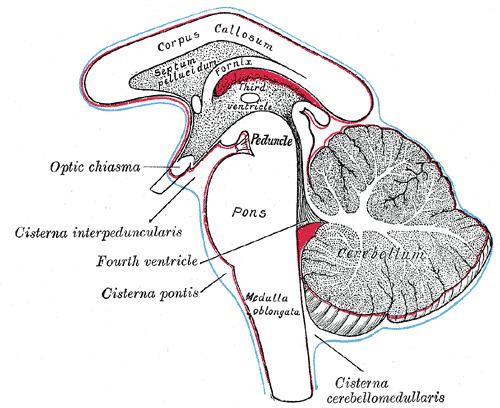 | ||
Duret haemorrhages are small lineal areas of bleeding in the midbrain and upper pons of the brainstem. They are caused by a traumatic downward displacement of the brainstem.
Contents
It is named for Henri Duret.
Pathogenesis
They are secondary to raised intracranial pressure with the formation of a transtentorial pressure cone involving the front part of the cerebral peduncles, the cerebral crura. Increased pressure above the tentorium may also involve other midbrain structures.
Kernohan's notch is a groove in the cerebral peduncle that may be caused by this displacement of the brainstem against the tentorial incisure. The resulting ipsilateral hemiparesis is a false localising sign, known as the Kernohan-Woltman syndrome. This may succeed or accompany temporal lobe (uncal) herniation and subfalcian herniation secondary to a supratentorial mass.
Causes
The common causes include hippocampal gyrus herniation through the tentorial notch, acute hematoma, edema following trauma, abscess, or tumor.
Imaging can be difficult.
Diagnosis
Duret haemorrhages are demonstrated by medical imaging techniques of CT or MRI.
Prognosis
It usually indicates a fatal outcome. However, survival has been reported.
Pathophysiology
The mechanism is uncertain but is probably caused by the displacement of the brainstem stretching and tearing perforating branches of the basilar artery to the pons; venous infarction may play a role.
